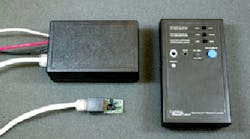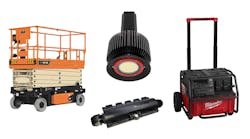The Polytechnic Institute’s Lighting Research Center (LRC) says it has been working on a daylight-switching device called the DaySwitch, designed for existing lighting fixtures and featuring simple setup and commissioning. With $198,745 co-funding from the New York State Energy Research and Development Authority (NYSERDA), the LRC research team collaborated with manufacturing partners to build DaySwitch prototypes and recently field tested the devices in a wide range of locations across the Rensselaer campus in Troy, N.Y., through a $398,248 project at the LRC that demonstrates and evaluates lighting technologies and applications (DELTA).
To test the device in diverse, real-world conditions, (public spaces, open-plan offices, and private offices), calculate energy savings, assess occupant acceptance, and gather installation feedback from electricians, DaySwitch devices were installed in 72 locations across campus, each with varying degrees of daylight access from windows or skylights. Although the primary market for the product is commercial retrofit, it can also be incorporated into new luminaires.
Study findings included:
- The DaySwitch provided the most energy savings in large open spaces with plentiful daylight, high luminaire wattages, and long hours of use.
- Commissioning was simple, requiring only about 30 sec per device.
- The product worked as intended by automatically switching off lights when sufficient daylight was available.
- Feedback from most occupants was generally neutral or positive. A few occupants of private offices objected to automatic switching.
- Private offices showed little or no energy savings because of minimal daylight availability (blinds, window tinting, and obstructions), low luminaire wattages, short hours of occupancy, and manual operation of a wall switch. Some private offices on the campus were over-lighted, which reduced the ability to switch off the lights because the Dayswitch determines its switching threshold as a function of the measured electric light level.




